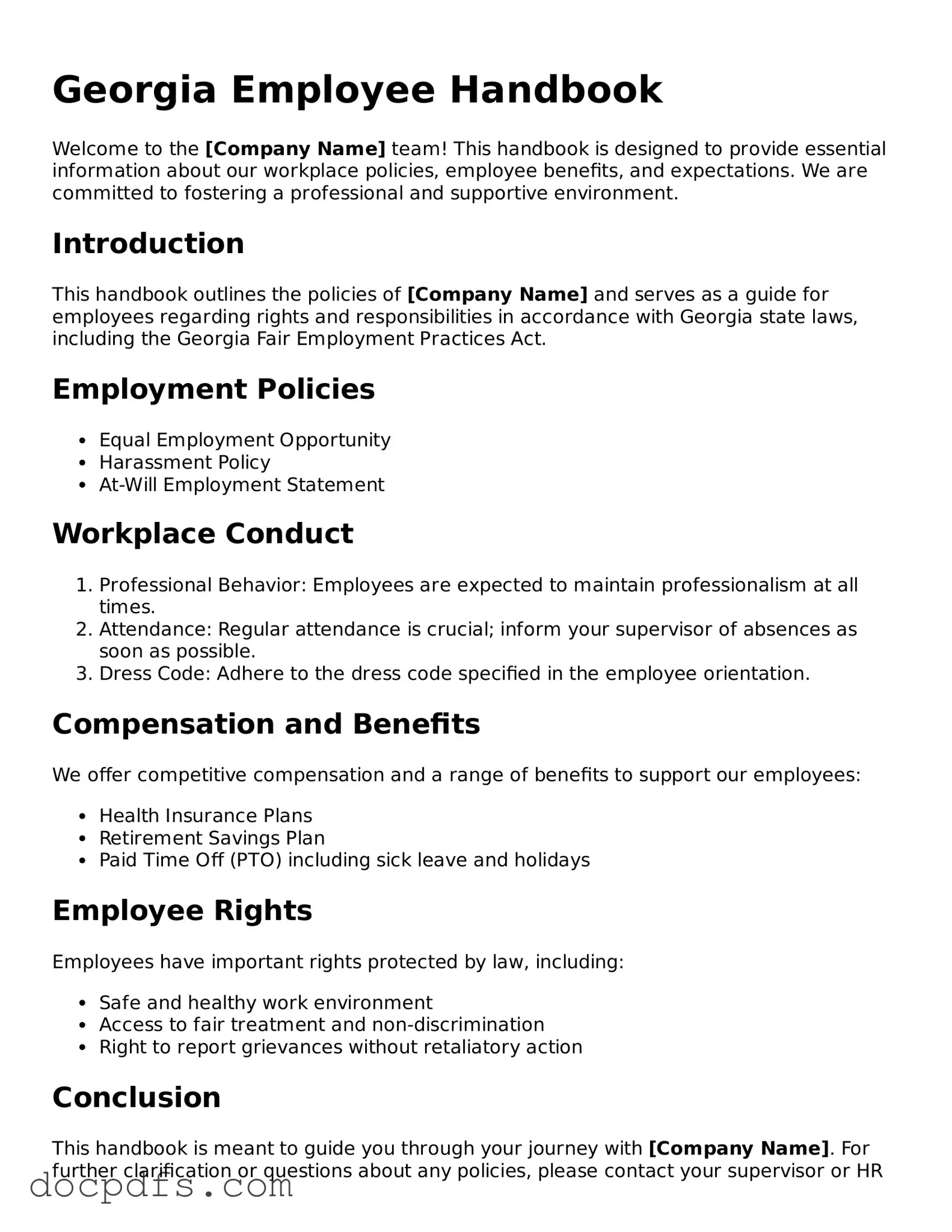The Georgia Employee Handbook form serves as a vital tool for employers and employees alike. It outlines the company's policies, procedures, and expectations, ensuring that everyone is on the same page. By providing clear guidelines, the handbook helps to promote a positive workplace culture and can assist in preventing misunderstandings or disputes down the line.
Who is required to have an Employee Handbook in Georgia?
While there is no strict legal requirement for all employers in Georgia to have an employee handbook, it is highly recommended for businesses of any size. Having a handbook can be particularly beneficial for organizations with multiple employees, as it helps to standardize policies and practices. Additionally, certain industries may have specific regulations that necessitate a handbook to comply with state or federal laws.
What key topics should be included in a Georgia Employee Handbook?
A comprehensive employee handbook should cover a variety of important topics, including but not limited to:
-
Company Mission and Values:
An overview of the organization's purpose and guiding principles.
-
Employment Policies:
Details regarding hiring practices, equal employment opportunity, and at-will employment status.
-
Workplace Conduct:
Expectations regarding behavior, dress code, and anti-harassment policies.
-
Compensation and Benefits:
Information on pay schedules, overtime, and employee benefits.
-
Leave Policies:
Guidelines for vacation, sick leave, and family leave.
-
Disciplinary Procedures:
Steps the company may take in response to policy violations.
How often should the Employee Handbook be updated?
It is crucial to review and update the employee handbook regularly. Changes in laws, company policies, or operational practices may necessitate revisions. Ideally, an annual review should be conducted to ensure that the handbook remains current and relevant. However, if significant changes occur, such as new legislation or a shift in company policy, updates should be made promptly to reflect those changes.
How can employees access the Employee Handbook?
Employers should make the employee handbook easily accessible to all staff members. This can be achieved through various means, such as:
-
Providing printed copies during onboarding.
-
Making the handbook available on the company intranet or website.
-
Distributing digital copies via email or a shared drive.
Additionally, it is advisable to remind employees periodically about the handbook's availability and encourage them to review it regularly.
What should employees do if they have questions about the Employee Handbook?
If employees have questions or need clarification regarding any aspect of the employee handbook, they should feel encouraged to reach out to their supervisor or the human resources department. Open communication is essential for addressing concerns and ensuring that all employees understand their rights and responsibilities within the workplace. Employers should foster an environment where questions are welcomed and answered promptly.
